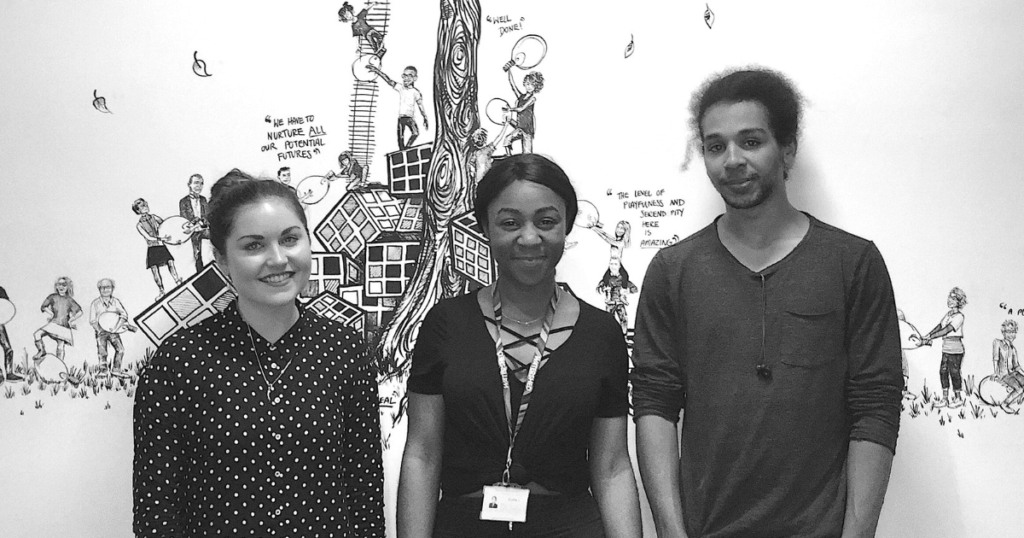Setting up a brainstorming session
Brainstorming is one of the most popular ways to generate new ideas and solve problems. It involves a discussion in a group with the aim of generating new ideas or solving a problem. Although the process requires structure to be effective, it is also a fun and creative way of working.
The classic brainstorming technique was first written about in 1938 by Alex Osborn, an advertising executive and creativity theorist. He wrote several books on how to brainstorm and make the most of your creativity in different settings. He is recognised as the person to make ‘creative thinking’ and ‘brainstorming’ household words.
Osborn suggested that you should stick to four key rules in order to get the most out of brainstorming:
- Quantity breeds quality
Aim to get every idea down on paper and assess how good they are later on. - No judgement
Ban negative language, be respectful of others and allow yourself and others to contribute thoughts without too much censorship. - Build and link ideas
Use other people’s ideas as a foundation to draw associations from. - Be creative
The more out of the box, wild and wacky, the better!
“It’s easier to tone down a wild idea than it is to think up a new one!” Alex Osborn
How to start a brainstorming session
Brainstorming can be the key to unlocking unconventional and innovative ideas that would otherwise get buried.
Your brainstorming session will require a little preparation, and the tone needs to be set correctly early on. It’s important that everyone understands and shares the same goals and is on the same page. Boundless freedom is great, but impractical. Setting and agreeing upon some limits keep things realistic.
Encourage equal participation
You need a facilitator to lead your brainstorming session. Without a facilitator, introverts may sink to the back of the room and allow extroverts to dominate. Encouraging equal participation at the beginning will help nurture a healthy and solution-focused atmosphere to brainstorm. You want everyone to feel they have permission to contribute and are comfortable putting forward any ideas they have.
Make an active decision about who will participate. It might seem obvious who the members of your team are that are working on this problem, but sometimes including one or two people that are a little more removed can provide new and interesting insights.
Identify a problem
To get the most out of your brainstorming session, you need one clearly defined problem at the centre of it. If you have a particularly complex issue, or have identified multiple problems to solve, consider breaking them down into manageable chunks. You can work through more than one brainstorming session and combine the results together later.
Once you have your key starting point, the ideas should start flowing. Drop the judgement at this point and throw every idea into the mix by mind mapping.
Even if your idea isn’t fully formed or doesn’t seem quite right, it could be the jumping off point someone else needs to come up with a great solution. Growing your mind map, build on each other’s ideas but try to keep to one conversation at a time.
Set expectations and agree timeframes
As with any meeting or collaborative work sessions, tangents can, and will, happen. However, when brainstorming, this may be where the magic starts!
Your brain makes connections you wouldn’t expect, which is not a bad thing. You may find yourself on a path that wasn’t obvious before, and find diamonds in the rough that you never knew were there.
Unfortunately, we can’t spend all our time sitting around, discussing and mind mapping ideas. Usually you will be brainstorming to solve an issue and, at some point, that issue needs to get sorted. Try putting a time limit in place.
At the beginning of the session, let everyone know the planned duration and update them when you reach half way.
Sometimes when working, especially creatively, the options are infinite and there’s no clear end point. It helps to just draw a line at some point and work with the ideas you have.
Choose a method for recording outcomes
The method that you choose to record your brainstorm can either help or hinder your creativity. Recording it visually way is always the best way to get down all the info you need without stunting your thinking.
Using a mind map allows you to get all your ideas down in an organised and visual way. By crossing over both sides of your brain, you can utilise your creativity logically, working with your brain rather than against it.
Lists also have their place, and of course this is another way that you could record your brainstorm, but sometimes linear methods have a way of stifling imagination.
Once you’ve decided on the best way to record your ideas, you’ll know whether you need to nominate a scribe or if you will all be working collaboratively on notes.
If you are mind mapping, you can use mind mapping software or online mind mapping platform like Mind Map Pro to collaborate. This way, you can all add ideas as you go, helping to spark one another’s eureka moments!
If you decide you want someone to record your ideas for you, using online mind mapping or a mind mapping software means that you can share your work with everyone easily, with collaborative workspaces or export options in Mind Map Pro.
Introduce brainstorming to new settings
Whether it’s at work, in an educational setting or somewhere completely different, there isn’t a problem that can’t be solved through brainstorming and mind mapping. Getting different minds together, all with a common goal, can move mountains.
Be proactive in your management of these discussions. By learning and teaching how to brainstorm, you’ll never let a great idea slip away again.



